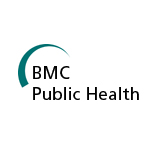
Background: Studies comparing perinatal outcomes in multiples conceived following the use of artificial reproductive technologies (ART) vs. spontaneous conception (SC) have reported conflicting results in terms of mortality and morbidity. Therefore, the objective of our study was to compare composite outcome of mortality and severe neonatal morbidities amongst preterm multiple births < 32 weeks gestation infant born following ART vs. SC. Methods: We conducted a single center cohort study at Mount Sinai Hospital, Toronto, Ontario, Canada. Data on all preterm multiple births (< 32 weeks GA) discharged between July 2005 and June 2008 were retrospectively collected from a prospective database at our centre. Details regarding mode of conception were collected retrospectively from maternal health records. Preterm multiple births were categorized into those born following ART vs. SC. Composite outcome was defined as combination of death or any of the three neonatal morbidities (grade 3/4 intraventricular hemorrhage or periventricular leukomalacia; retinopathy of prematurity > stage 2 or chronic lung disease). Univariate and multivariate regression analysis were preformed after adjustment of confounders (maternal age, parity, triplets, gestational age, sex, and small for gestational age). Results: One hundred and thirty seven neonates were born following use of ART and 233 following SC. The unadjusted composite outcome rate was significantly higher in preterm multiples born following ART vs. SC [43.1% vs. 26.6%, p=0.001; OR 1.98 (95% CI 1.13, 3.45)]; however, when adjusted for confounders the difference between groups was not statistically significant [OR 1.39, 95% CI 0.67, 2.89]. Conclusion: In our population of preterm multiple births, the mode of conception had no detectable effect on the adjusted composite neonatal outcome of mortality and/or three neonatal morbidities.